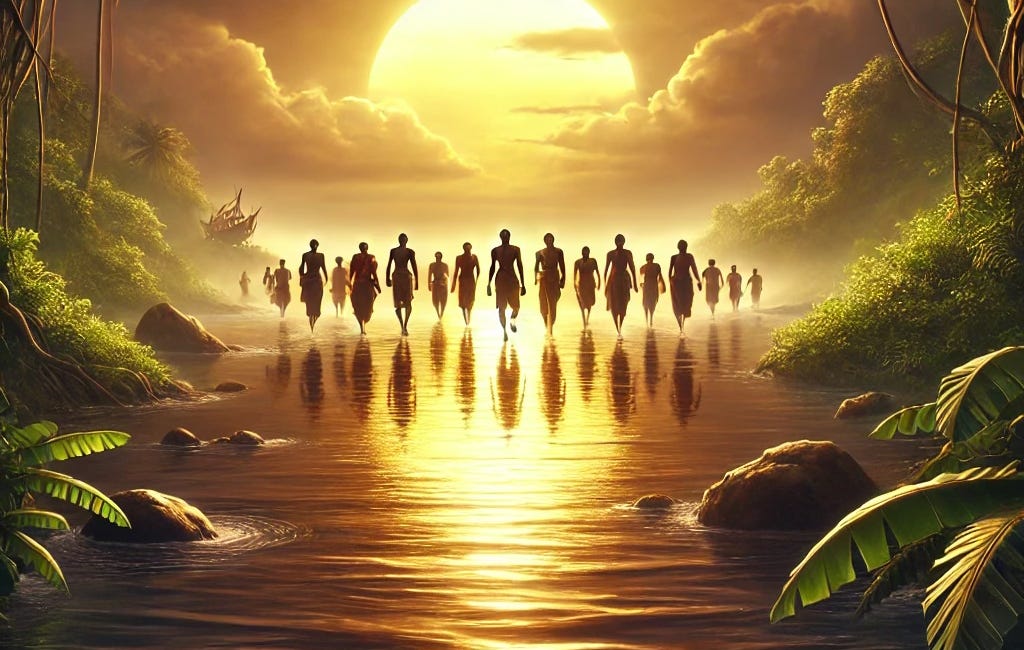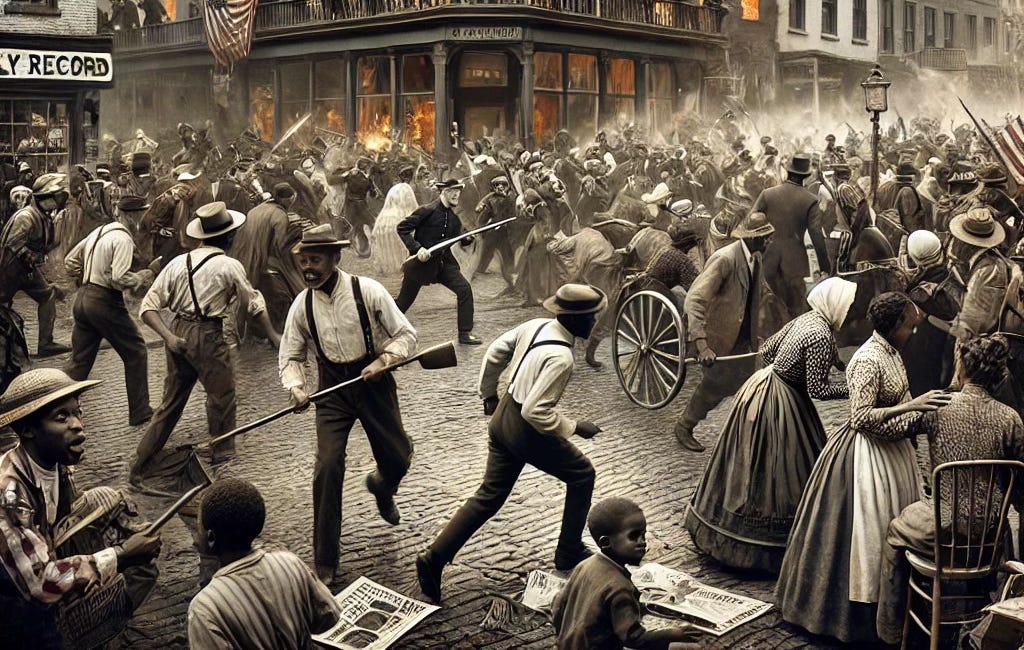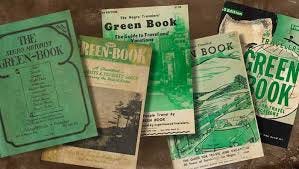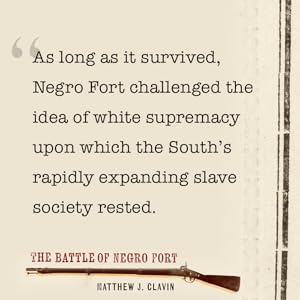Blueprints for Liberation: What Maroon Communities Teach Us About Building a New Future
OHHHH you cant imagine what liberation could look like? No worries, there are plenty of examples in true Black history. Welcome to a new worldview. Happy Black History Month!
Zumbi dos Palmares and the Quilombo of Palmares:
Throughout the 1600s, amid the violent grip of Portuguese colonization and the transatlantic slave trade, there existed an incredible beacon of resistance in Brazil—the Quilombo of Palmares. It was more than a settlement; it was a liberated community, a sanctuary built by escaped African enslaved people (known as
Igbo Landing (1803): Ancestral Defiance, Water Legends, and the Power of Cultural Legacy
Igbo Landing (1803): The Power of Ancestral Resistance and Cultural Legacy
Robert Smalls’ Escape (1862): The Journey from Enslaved Pilot to Congressman
Robert Smalls’ Escape (1862): The Journey from Enslaved Pilot to Congressman
The Haitian Revolution (1791–1804): The Only Successful Slave Rebellion in History
The Haitian Revolution wasn’t just a fight for freedom—it was a spiritual, cultural, and military upheaval that reshaped global history. This wasn’t just a fight for freedom—it was a radical, world-changing event that proved what enslaved people could achieve when united under the shared goal of liberation. For over a decade, enslaved Africans in the Fr…
The Exodusters Movement (1879): Building Freedom on New Soil
In the years following the Civil War, as the promise of Reconstruction began to crumble under the weight of systemic racism, a movement of Black resilience took shape. Thousands of Black United States Americans, known as Exodusters, left the oppressive South in search of a better life on the open plains of Kansas and neighboring states. This migration w…
The Red Summer (1919): When Black Resilience Faced White Rage
The summer of 1919 wasn’t just a season of warmth—it was a season of bloodshed, resistance, and resilience. Known as the Red Summer, this period saw a wave of white supremacist violence erupt across the United States, targeting Black communities with deadly precision. The violence wasn’t confined to a single city—it stretched across more than 30 locatio…
The Deacons for Defense and Justice (1964): Protecting Black Communities from State and White Supremacist Violence
During the Civil Rights Movement of the 1960s, when nonviolent protests dominated the public narrative, there existed another side of the struggle—one that didn’t get as much attention but was just as crucial. The Deacons for Defense and Justice, a group of armed Black men and women, was formed to protect civil rights activists and Black communities fro…
The MOVE Organization (1972–1985)
Resilience, Environmental Justice, and the Fight Against State Violence
The Combahee River Collective (1974–1980): The Birth of Intersectional Feminism and Collective Liberation
The Combahee River Collective wasn’t just an organization—it was a political movement, a declaration of self-determination, and the birthplace of ideas that continue to shape liberation work today. Founded by a group of Black feminist lesbians in Boston, the collective recognized that the fight for freedom could not be single-issue. Their
Angelo Herndon’s Labor Organizing (1932)"You Cannot Kill the Working Class"
Angelo Herndon (1913–1997) was a radical Black labor organizer whose courage and dedication to racial and economic justice reshaped labor activism during the Great Depression. His leadership, particularly through the Communist Party and the Unemployed Councils, highlighted the intersection of race and class oppression at a time when organizing against b…
The Wilmington Insurrection of 1898: The Coup That Changed American Democracy
The Wilmington Insurrection of 1898
The Brotherhood of Sleeping Car Porters (1925) – The First Black-Led Union That Changed America
In the early 20th century, being a Pullman porter was one of the few jobs available to Black men that provided a steady income. However, it came at a steep cost—long hours, low pay, and relentless racism. These men, often called "George" after the company's founder,
The Free African Society (1787) – The Foundation of Black Mutual Aid and Community Self-Determination
Mutual Aid as an Ancestral Practice
The Negro Motorist Green Book (1936–1966) – A Guide to Survival and Joy on the Road
In an era where simply traveling while Black in the United States could be a matter of life or death, The Negro Motorist Green Book was more than just a travel guide—it was a survival tool, a roadmap to safety, and a testament to Black resilience and ingenuity.
The Silent Parade (1917) – A March for Justice That Echoes Today
On July 28, 1917, in the sweltering heat of a New York summer, nearly 10,000 Black men, women, and children marched silently down Fifth Avenue. Dressed in white, carrying banners demanding justice, they walked in complete silence. No chants, no slogans—just the sound of their footsteps.
The Ossian Sweet Incident: A Fight for Home and Dignity (1925)
In the summer of 1925, Dr. Ossian Sweet, a Black physician in Detroit, decided to do something radical—he bought a home in a white neighborhood. It was an act that should have been simple, but in the racially charged climate of the early 20th century, it was seen as a threat. What followed was a harrowing example of how Black prosperity was met with whi…
The League of Revolutionary Black Workers (1969): Labor, Liberation, and the Power of Collective Action
In the long fight for Black liberation, the battlefront has never been singular. While many look to civil rights marches and political activism, the struggle for economic justice and workers’ rights has been just as critical. The League of Revolutionary Black Workers
The Port Royal Experiment (1862–1865) and Sherman’s Field Order 15
The Promise of Land and the Betrayal of Reconstruction
The Amistad Rebellion (1839) – A Fight for Freedom on the High Seas
How Enslaved Africans Took Their Liberation Into Their Own Hands
The Stono Rebellion (1739) – The First Major Slave Revolt in the American Colonies
How Enslaved Africans Fought for Their Freedom Before the United States Even Existed
The Zanj Rebellion (869–883) – The Forgotten African Revolt That Shook an Empire
How Enslaved Africans in the Middle East Fought for Freedom and Built Their Own Societies
The Attica Prison Uprising (1971) – The Revolt That Exposed the Carceral State
What Happens When People Are Pushed to the Edge—and What That Teaches Us About Liberation Today
The Harlem Renaissance (1920s) – A Love Letter to Black Art, Expression, and Freedom
To the dreamers. The poets. The musicians. The painters. The storytellers.
The Black Liberation Army (1970–1981) – The War Against State Violence
In the fight against white supremacy, oppression does not pause—and neither does resistance.
The Soweto Uprising (1976) – When Children Defied an Empire
On June 16, 1976, thousands of Black South African students took to the streets in one of the most powerful acts of resistance against apartheid.
































thanks for these great resources! Will be reading and sharing.